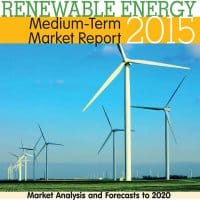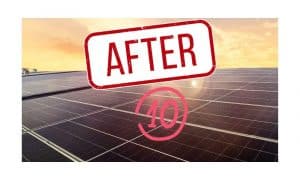A new report from the International Energy Agency (IEA) states renewables are expected to be the largest source of net additions to power generation capacity globally out to 2020.
The IEA’s Medium-Term Renewable Energy Market Report 2015 (MTRMR) says onshore wind power will lead the charge, accounting for a third of renewables capacity growth. Wind is followed by solar power (solar PV) and then hydropower.
The MTRMR’s main case indicates renewables’ share of electricity generation jumps from 22% in 2013 to more than 26% in 2020.
The stand-out country for renewables deployment will be China, accounting for 40% of global renewable capacity growth – an amount triple the current total power capacity of the United Kingdom
“Renewables are poised to seize the crucial top spot in global power supply growth, but this is hardly time for complacency,” said IEA Executive Director Fatih Birol during a launch event for the report.
“Governments must remove the question marks over renewables if these technologies are to achieve their full potential, and put our energy system on a more secure, sustainable path.”
The deployment trend is expected to slow due to various issues in some markets; such as policy uncertainty, financing, access and integration challenges. Global growth under the MTRMR main case forecast is not as fast as it could be and comes up short of what is required to put renewables on track to meet longer-term climate change goals.
The MTRMR main case pegs investment in new renewable capacity to 2020 averaging approximately USD 230 billion annually. This is significantly lower than the near USD 270 billion last year and while the primary cause will be slowing capacity growth, decreasing investment costs for the most popular technologies will also play a role.
Between 2015 and 2020, the MTRMR forecasts new onshore wind farm costs will drop by a further 10% and new utility scale solar PV costs will reduce by an additional 25%.
The report’s accelerated case projection shows the positive effects of possible policy changes in key countries, which could accelerate cumulative renewable power growth by 25% with rising annual deployment.
The full IEA Medium-Term Renewable Energy Market Report 2015 executive summary can be viewed here (PDF).
The International Energy Agency was established in 1974, originally as a response to the oil supply crisis of the 70’s. Today it also provides research and analysis on strategies to ensure reliable, affordable and clean energy for its 29 member countries, including Australia, and beyond.















































